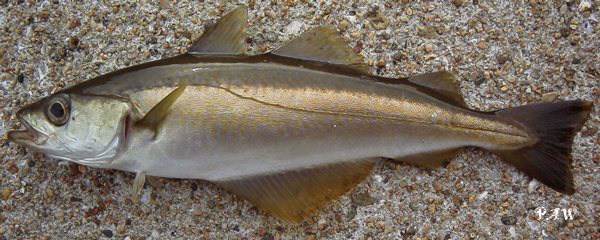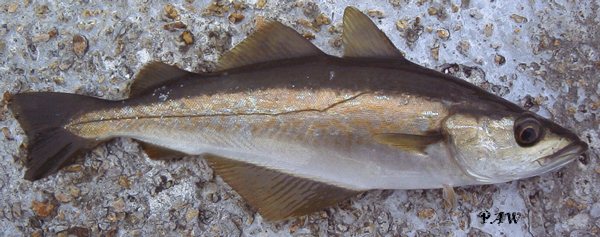Identification:
Member of the cod family.
The body is slightly deeper than thick with a greenish brown lateral line
that curves noticeably towards the head.
There are three dorsal fins and two anal fins. The tail fin is concave.The
body colouration is variable depending on habitat, but generally a dark
green/olive back with a golden sheen, silvery flanks and white belly.The
lower jaw projects beyond the upper, and there is no barbel on the chin
Breeding:
Spawning normally occurs February - May in 100m - 200m of water. Growth rate
depends on the food supply of its habitat and is most rapid during the summer
and autumn. A length of about 8" can be attained by the end of the first
year. A 36" pollack may be 10 year old.
Habitat:
Pollack prefer the cover of reefs, wrecks, piers and rocks. They
prefer deep water, though young pollack will inhabit kelp beds closer inshore.
A bottom feeder during the day moving closer to the surface as the light
fades.
Food:
Plankton as larvae but at a few inches in length move to a diet of
shrimp, crabs and other crustaceans. Young Pollack will also feed on marine
worm and small rockpool creatures. Mature pollack feed mainly on fish and
in particular sandeel, herring and small members of the cod family, though
wil scour the bottom for marine worm.
Range:
All around the coast of Britain but more common in the West and in particular
Western Ireland.
Additional Notes:
Excellent eating...... Flesh breaks up into large white flakes when cooked.. |

